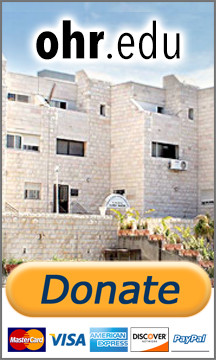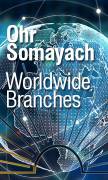Leaving Learning For Levayos?
In Parshas Vayechi we are told of the colossal levayah (funeral) held for YaakovAvinu, from Egypt all the way up to his final resting place, Me’aras HaMachpella in Chevron. Indeed, the respect and honor accorded to Yaakov Avinu on his passing was universal, and we find that even the Canaanite Kings, no friends of Bnei Yisrael, nonetheless joined in with the massive levayah.[1]
Although we cannot fathom such a gathering for a funeral, nevertheless, the recent spate of Levayos for Gedolim over around the last decade that engendered public turnout in the hundreds of thousands of mourners - has left even the most jaded of secular pundits speechless. The passings of such Gaonim as Rav Yosef Shalom Elyashiv zt”l, Rav Nosson Tzvi Finkel zt”l, Rav Chaim Pinchas Scheinberg zt”l, mv”r Rav Yaakov Blau zt”l, the Vizhnitzer Rebbe zt”l, Rav Ovadia Yosef zt”l, Rav Shmuel Halevi Wosner zt”l, Rav Aharon Leib Shteinman zt”l, Rav Chaim Kanievsky zt”l, and Rav Gershon Eidelstein zt”l, among other great Rabbanim, over the last several years, has exemplified how much of a priority it is for us to pay our respect and show our esteem and reverence for these luminaries, as testament to their vast accomplishments as Gedolei HaDor.
Their vastly different backgrounds and constituents notwithstanding, each of these giants’ Levayos had attendance well into the tens and even hundred thousands, consisting of the full spectrum of religious Jewry.
Indeed, the rewards for attending a levayah, and not just for Gedolim, are many. In fact, this Gemillas Chessed Shel Emes is referred to as a mitzvah that is ‘keren kayemes l’olam haba’ah’, an eternal one with rewards both in This World and the World to Come, with no diminished returns.[2]
Deceased’s Needs Fulfilled?
Yet, we find that according to the Gemara and codified as halacha, that although ‘Talmud Torah Kenneged Kulam’, Torah study is the greatest of all Mitzvos,[3] nevertheless, one is obligated to leave his Torah study in order to properly escort one who has passed on.[4]
Although the Gemara qualifies this rule, and asserts that it is relevant only to one who does not have ‘kol tzorcho’, his required needs, nowadays this is fulfilled with a ‘Chevra Kadisha’, a Burial Society, and one should not abandon his Torah study to attend a random levayah when basic requirements are being met.[5]
However, continues the Gemara, different people have different needs regarding their levayos. A basic minyan is only deemed sufficient for one who is not learned.[6] Yet, for one who is learned, his basic needs for a levayah is an astounding 600,000 attendees, the same amount of those present at Kabbolas HaTorah! This is due to the dictum of ‘Netilasah K’Nisinasah’; the same amount present at Kabbolas HaTorah should be present when the Torah departs, meaning when one who is filled with Torah passes away.
Lest one think that this halacha is referring to a Gadol HaDor or at the very least, a famous Rosh Yeshiva, the Rema explains that in his time, anyone with at least a rudimentary Jewish education (in Chumash and Mishna) is included in this category! Although the Aruch Hashulchan felt that this was possibly only true in the Rema’s time, conversely, the Minchas Elazar of Munkacs remarked that in his day (around 85 years ago) this was certainly true; as ‘who doesn’t sit in shul over Shabbos and recite shnayim mikra v’echad targum?!”[7]
The Gemara concludes that for one who teaches Torah to others, also not only exclusively referring to a Gadol Hador or Rosh Yeshiva, but even a Rebbi, Rav, Posek, Maggid Shiur, or Rosh Chaburah, there is no limit, and everyone is obligated to attend his levayah![8]
Limud or Levayah?
If so, why do we only find such numbers of mourners at Gedolim’s levayos? In large cities wouldn’t everyone be required to stop their talmud Torah many times a day, simply to escort their fellow man, whom they may not have ever met, to his eternal rest?
Although there are several approaches and rationales given to answer this question, it is important to note that many Gedolim grappled with this issue, implying that the question is still better than the answer.[9]
The main rationale for leniency is actually based on a machlokes pertaining to attending a wedding Chuppa, where we find that the halacha parallels that of a levayah regarding stopping learning to attend.[10] The Chelkas Mechokek writes that this halacha only applies to one who sees a Chuppa occurring – that he must stop his learning to attend the wedding. Yet, if one merely knows about a wedding taking place, one is not obligated to do so. The Beis Shmuel, however, argues, countering that even if one knows about a wedding, one is nonetheless obligated to attend, even at the cost of his learning.[11]
The famed Netziv,[12] Rav Naftali Tzvi Yehuda Berlin zt”l, Rosh Yeshivas Volozhin, maintains that regarding levayos the halacha follows the opinionof the Chelkas Mechokek. He cites proof to this from the words the Gemara in Brachos (and later codified by the Shulchan Aruch) uses referencing levayos that refers to attending one as ‘HaRoeh es HaMeis’, seeing one who passed away. The Netziv explains this to mean that unless one actually sees a levayah occurring, he is not obligated to stop his learning to attend. Although several authorities seem hesitant to rely upon this rationale,[13] nevertheless, the vast majority of decisors actually rule this way, paskening that one is not required to attend a levayah and abandon his learning simply because he is aware of one taking place.[14]
Other rationales for leniency include: that only Talmud Torah of an individual needs to be halted for a levayah, not public Talmud Torah;[15] that nowadays many levayos do not start at the appointed time, and one needs only to stop learning and attend when he is certain that the levayah is taking place;[16] and that the halacha was referring to when everyone in the town was part of one small unified kehillah; ergo, nowadays in large cities, where there is a plethora of kehillos, some with no interaction with another, the ruling would not apply.[17]
Additionally, as Rav Ezriel Auerbach averred to this author several years ago, this issue would potentially fall into the category of ‘Ais La’asos Lashem, Heiferu Torasecha’, a time to act for Hashem to prevent the Torah from being forgotten,[18] as otherwise nowadays, especially in large communities, if one is running all day from levayah to levayah, ‘Torah, mah t’hei aleha?,’[19] there will be no time left to learn!
But one thing is certain. Many Gedolim stress that if one does come across a levayah, he is obligated to stop what he is doing and attend, accompanying the niftar at least four Amos along his final journey.[20]
Bitulo Hee Kiyumah
Another interesting related issue is that the Tur and Shulchan Aruch rule that the only constituency that should never stop its learning for any levayah whatsoever, is Tashb”ar, Tinokos Shel Beis Rabban, or cheder school children.[21] Yet, nowadays, it is accepted that for the passing of a Gadol, Talmudei Torah are let out, with the children being urged to participate in the levayah as well. How is this allowed?
Rav Yosef Chaim Sonnenfeld zt”l, when asked this question, replied that the Gedolim of previous generations felt that having children stop learning to attend the levayah of a Gadol was acceptable in order to show honor to the Torah. He added that anyway, children nowadays have intersession and vacation on other days when they are not learning. If so, paying last respects to a Gadol is certainly no worse than Bein HaZmanim. Others add that it is purposely done so that the children will learn to appreciate the greatness of Torah. Moreover, in this case ‘bitulah hu kiyumah’, this brief break for a Gadol’s levayah will undoubtedly engender more and greater Torah learning on the children’s part.[22]
In the final analysis, if one is attending a levayah, he should not bemoan the fact that he is missing seder. On the contrary, he should focus on the great Mitzva he is performing. By escorting the recently departed to his eternal rest, he is earning his own eternal reward.
Rabbi Yehuda Spitz, author of M’Shulchan Yehuda on Inyanei Halacha
and the ‘Insights Into Halacha’ column,
serves as the Sho’el U’Meishiv and Rosh Chabura
of the Ohr Lagolah Halacha Kollel at Yeshivas Ohr Somayach in Yerushalayim.
For any questions, comments or for the full Mareh Mekomos / sources, please e-mail the author: yspitz@ohr.edu.
Rabbi Spitz’s recent English halacha sefer,
“Insights Into Halacha - Food: A Halachic Analysis,” (Mosaica/Feldheim)
contains more than 500 pages and features over 30 comprehensive chapters discussing a myriad of halachic issues relating to food, in an engaging manner. It is now available online and in bookstores everywhere.
[1]See Parshas Vayechi (Bereishis Ch. 50: verses 7-13), Gemara Sota (13a), Yerushalmi Sota (Ch. 1:10), and Rashi, Targum Onkelus, and main commentaries on those pesukim. See also Sefer HaYashar (Parshas Vayechi s.v. vayechal and on) for a full Midrashic treatment of the full grandeur of Yaakov Avinu’s funeral. Avraham Avinu also merited a gargantuan levayah, attended by all residents of Canaan. See Gemara Bava Basra (91a) and Sefer HaYashar (Parshas Toldos s.v. vayehi ka’asher; thanks are due to Rabbi Naftali Zvi Frankel for pointing out this important source).
[2]Recited daily as part of ‘Eilu Devarim’ in Birchos HaShachar, based on Mishnayos Pe’ah (Ch. 1, Mishna 1) and Gemara Shabbos (127a). There are several other ma’amarei Chazal detailing the rewards of those who are melaveh a meis, and the punishments of those who do not - see Gemara Brachos (18a), Moed Kattan (27b), and Kesuvos (72a). See also Rambam (Hilchos Avel Ch. 14:1) and Aruch Hashulchan (Yoreh Deah 361:1).
[3]Mishna Pe’ah and Gemara Shabbos (ibid.).
[4]Gemara Megillah (3b and 29a) and Kesuvos (17a-b); Rambam (Hilchos Avel Ch. 14:9), SMa”G (Ase’in DeRabbanan 2), Tur and Shulchan Aruch (Yoreh Deah 361), Chochmas Adam (155:3), Kitzur Shulchan Aruch (198:8-9), and Aruch Hashulchan (Yoreh Deah 361:2-4).
[5]See Rashi (Kesuvos 17b s.v. lais) and Tosafos (ad loc. aval).
[6]The Gemara’s choice of words is ‘lma’an d’lo kari v’tani’, which Rashi translates as one who has not learned Chumash or Mishna.
[7]Rema (Yoreh Deah 361:1; based on the Ritva’s comments to Kesuvos ibid.), Shu”t Minchas Elazar (vol. 1:26, in the footnote). The Chochmas Adam (153:3) and Kitzur Shulchan Aruch (198:9) follow this assessment as well. Interestingly, and as a counter point to the Minchas Elazar’s assertion, the Aruch Hashulchan (Yoreh Deah 361:3) writes that the Rema’s comment was only ‘l’fi doroseihem, kemuvan’, strongly implying that this assessment may not actually apply in our times. As to the importance of reciting Shnayim Mikra, see previous article titled ‘Understanding Shnayim Mikra V’Echad Targum’.
[8]The Chofetz Chaim (Ahavas Chessed vol. 3, Ch. 5, s.v. v’afilu) writes that even a ‘zakein m’chachmei hador’ is obligated in the Mitzva of Levayas HaMeis, as the Gemara (ibid.) stresses that R’ Yehuda b’Rebi Ilai would be mevattel Torah for Hotza’as HaMeis.
[9]For example, the first time the Minchas Elazar addressed this issue (Shu”t vol. 1, ibid.) he wrote several pages of shakla v’tarya but was ultimately unsuccessful in finding a proper solution. It is only in later responsa that he hit upon, and agreed to the Netziv’s approach. Likewise, in Halichos Shlomo (Tefilla, Ch. 13, footnote 22), a story is told of Rav Shlomo Zalman Auerbach zt”l and Rav Moshe Feinstein zt”l, who both admitted to being very bothered with this issue, and not being fully satisfied with the general custom.
[10]Although the Shitta Mekubetzes (Kesuvos 17a) implies that a wedding is stricter and has no limit to the amount of people required to attend, nevertheless, Avos D’Rav Nosson (Ch. 4, Halacha 1) writes that the two Mitzvos are comparable in every way. See also Rambam (Hilchos Avel ibid.) and Rema (Even Ha’Ezer 65:1). In, fact the actual words of the Gemara (Megillah and Kesuvos ibid.) are ‘Mevattlin Talmud Torah l’Hotzaas HaMes Ul’Hachnosas Kallah’. The Yad Eliyahu (Shu”t 39, cited by Pischei Teshuva in Even Ha’ezer 65, 3) cites proof to this parallel from Koheles (Ch. 3: verses 1-8). All of the different ‘times for actions’ are written with a lamed, except two: ‘eis sefod v’eis rikod’, ‘a time to eulogize and a time to dance’, to teach that exclusively for these two times one is required to be mevattel his limud.
[11]Chelkas Mechokek (Even Ha’ezer 65:2), and Beis Shmuel (ad loc. 3). Rav Moshe Feinstein (Shu”t Igros Moshe, Orach Chaim vol. 2:95, s.v. u’lchein) wrote an interesting teshuva regarding one who wants to attend a chasuna during Sefiras Ha’Omer, but it is still ‘Sefirah’ for him (meaning the Baalei Simcha kept a different ‘Sefirah’ than the guest; this issue was addressed at length in an article titled Switching Sefirahs: Understanding Your Minhag and its Ramifications) and consequently he prohibited to take a haircut. Rav Moshe writes that if the guest is embarrassed to show up without a haircut, he may get one. He explains that according to the Beis Shmuel it is a chiyuv to attend a wedding one knows about, and although the Chelkas Mechokek maintains that it is obligatory exclusively when one actually sees a Chuppa occurring, that is only regarding whether one is required to stop his Torah learning; ergo, he certainly would agree that one who is not currently learning still receives a mitzvah for attending a wedding.
[12]Ha’amek Sheilah (on the Sheiltos, Parshas Chayei Sara, Sheilta 14:2 and Parshas Vayechi, Sheilta 34:2), Gemara Brachos (18a), Shulchan Aruch (Yoreh Deah 361:3).
[13]See Shu”t Yad Eliyahu (39; cited by the Pischei Teshuva both in Hilchos Levayas HaMeis, Yoreh Deah 361, 2 and Hilchos Kiddushin, Even Ha’ezer 65:3), and Gesher HaChaim (vol. 1, Ch. 4:7, pg. 127-128, see extensive footnote 3, and vol. 2, Ch. 10:4, s.v. v’HaBeis Shmuel).
[14]Including the Sheilas Dovid (end Shu”t vol. 1, Chiddushim to Yoreh Deah 361, pg. 16), the Minchas Elazar (Shu”t vol. 2, Kuntress Shirei Mincha on vol. 1:26, s.v. uv’inyan and vol. 4:2, s.v. uv’hemshech), Sdei Chemed (Maareches Chassan V’Kallah 22 and Aveilus 192), Rav Yosef Chaim Sonnenfeld (Shu”t Salmas Chaim, new print, Yoreh Deah 194), the Debreciner Rav (Shu”t Ba’er Moshe vol. 4:98), the Tzitz Eliezer (Shu”t vol. 5, Kuntress Ramat Rochel, 50:2, 3, s.v. u’kmo kein and vol. 7, Kuntress Even Yaakov 21), Rav Moshe Sternbuch (Shu”t Teshuvos V’Hanhagos vol. 4, pg. 323:13), Rav Chaim Kanievsky (in an unpublished teshuva to R’ Yitzchok Winkler, dated 6 Kislev 5768), Rav Asher Weiss (Kovetz Darchei Hora’ah vol. 14, 3:5; pg. 38-39), Yalkut Yosef (Hilchos Aveilus, 10:4, pg. 237), and Pnei Baruch (Ch. 5, end 3, pg. 53).
[15]Shu”t Teshuvos V’Hanhagos (vol. 4, s.v. v’nirah). Additionally, in Shu”t Teshuvos V’Hanhagos (vol. 2:452 s.v. u’lefi aniyus daati) Rav Sternbuch writes that the Gr”a’s kavanna in his comment (Yoreh Deah 361:2; based on the Yerushalmi in Pesachim Ch. 3 and Chagiga Ch. 1), is to explain the Shulchan Aruch’s ruling differently, that one is only required to leave learning if he is not actively ‘osek baTorah’, then one should not go back to learn, rather attend the levayah. But one who is currently immersed in his learning would not be mandated to stop and attend the levayah.
[16]Rav Shlomo Zalman Auerbach (Halichos Shlomo ibid.) and Rav Yitzchak Yosef (Yalkut Yosef ibid.) raise this issue.
[17]Rav Moshe Sternbuch (Shu”t Teshuvos V’Hanhagos vol. 4:213 s.v. v’yeish and pg. 323:13) and Rav Asher Weiss (Kovetz Darchei Hora’ah vol. 14, 3:5; pg. 38–39 s.v. u’lefi aniyus daati andlo) make this compelling argument.
[18]This author personally heard this sevara to explain the common custom from Rav Ezriel Auerbach shlit”a. The source is Tehillim (Ch. 119, verse 126). The best known example of applying this is Rav Yehuda HaNassi’s (Rebbi) writing and codifying Torah Shebaal Peh as the Mishna. For additional examples of this and when this may be applied see Gemara Sanhedrin (17a) and Kli Yakar (Parshas Re’eh, Devarim Ch. 17:11). Rav Shmuel Halevi Wosner zt”l (Shu”t Shevet Halevi vol. 7:203 and vol. 8:283) wrote similarly, as one of the reasons explaining the Ponovezher Rosh Yeshiva, Rav Elazar Menachem Mann Shach’s wedding takkanah, allowing only family close friends of the chosson to attend a chasuna, as otherwise the Sidrei of Limud and Tefillah in Yeshiva become compromised on a constant basis.
[19]See Gemara Brachos (35b), Nazir (50a), Kedushin (52b and 66a), and Midrash Esther Rabba (Ch. 7, end 13).
[20]Several poskim maintain that this applies even if one is in a car or bus, or if one sees the levayah while in another reshus. See Gesher HaChaim (vol. 1, Ch. 14:9), Halichos Shlomo (ibid.), Shu”t Shevet HaKehasi (vol. 4:284 and vol. 5:214), Shu”t Ba’er Moshe (ibid. end s.v. aimasai), Maaseh Ish (vol. 2:122), and Yalkut Yosef (Aveilus pg. 244). Interestingly, some wish to draw a parallel from the halachos of Kibud Av V’Eim and Kibud Rabo [see Chayei Adam (vol.1:67, end 7) and Ben Ish Chai (Year 2, Parshas Ki Seitzei 13)] that one is not required to stand up for a father or Rebbi while technically in a different reshus than he is.
[21]Tur and Shulchan Aruch (Yoreh Deah 361, end 1), Shach (ad loc. 6), Biur HaGr”a (ad loc. 3), Chochmas Adam (155, end 3), Kitzur Shulchan Aruch (198:9), Aruch Hashulchan (Yoreh Deah 361:3). The reason being that Chazal state that the breath of children learning Torah holds up the world (Gemara Shabbos 119b), and should not cease even for a Gadol’s levayah. This is not like the opinion of the Rashal (Yam Shel Shlomo, Kesuvos Ch. 2:5) who maintains that for a Gadol’s funeral, children should stop learning to attend.
[22]Shu”t Salmas Chaim (new print, Yoreh Deah 192), Gesher HaChaim (vol. 1, Ch. 14:4), Shu”t Teshuvos V’Hanhagos (vol. 4, pg. 323:13 and footnote 13 s.v. mihu), Shu”t Yabea Omer (vol. 2, Orach Chaim 25:9 and vol. 4, Orach Chaim 35:1), Pnei Baruch (Ch. 5:3, and footnote 13), Yalkut Yosef (Aveilus Ch. 10:4), and personally heard from Rav Ezriel Auerbach.






